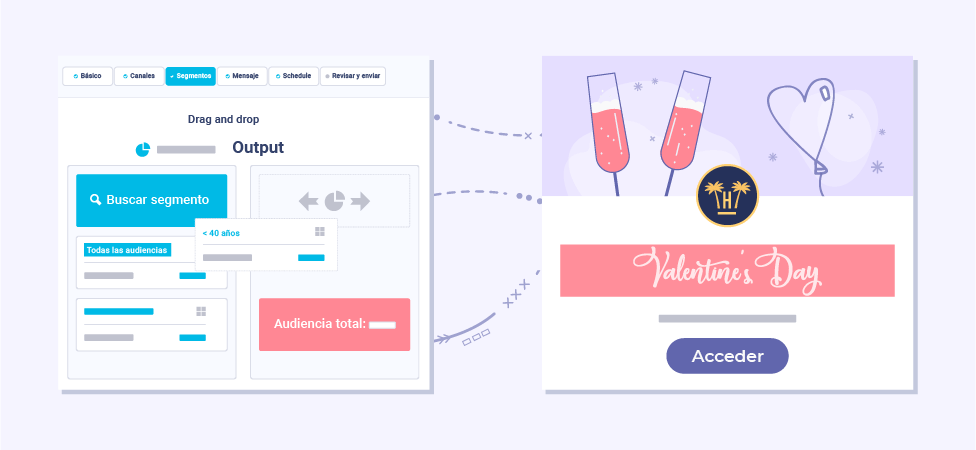
Marketing 4:37 Min read
Introducing Hotel Data: How to implement a lead generation strategy
As previously mentioned, a solid contact database is one of the most important assets for a hotel. Yet after the entry into force of the GDPR, hotel chains and independent hotels have seen their databases substantially reduced.
Although the European regulation may seem like an obstacle to your hotel’s marketing strategies, it’s also a new opportunity to implement better lead generation practices.
This is because with GDPR, we’re forced to polish the attraction and lead conversion strategies that have been implemented to date. The objective is to seek contact quality to compile a record of verified data of value which are truly useful to marketing actions. This information is referred to as Hotel Data. It’s an all-new and powerful marketing strategy based on the data you receive from your guests and which our CEO Daniel Alzina has reflected in his book “Hotel Data Advanced Course” which you can download for free here.
Hotel Data is the necessary quality and quantity of information on guests as an opportunity to truly know what their preferences are and not just improve the hotel’s products and services but also secure a larger number of loyal customers. And this is particularly important for hotels aiming to increase their direct sales.
So, how can you improve your strategy to attract more leads? You can do so by considering a series of corrective measures we call the 3 Cs of lead generation: capture, conversion and classification.
1. Capturing leads.
A lead, or a sales opportunity, isn’t and shouldn’t be just another contact that thickens your hotel’s database. Think of your leads as people who are actively interested in your content. Because content in the digital world is precisely what travel consumers need.
So, what do you need to do to capture these types of contacts? To capture quality leads that are appropriate for your type of business, you first have to apply a series of corrective measures to your content strategy. This means the content that appears and that you must work on in all your channels.
Buyer profile identifier.
You’ve surely defined your markets, right? Do you know that your British customers’ motivations are different from those of your Spanish customers, for example? Do you know which months work best for some and which for others? Or what types of services they generally prefer, etc.? Nonetheless, the term “market” is very broad and to improve your lead generation strategy, you must refine it a bit.
In other words, you must polish your potential buyers’ profiles a bit more in order to capture quality leads. After all, the idea is to narrow down the preferences of the consumers who are most likely to book rooms through your different channels, especially through your website booking engine. And this means considering only the users who are most likely to consume your content and products in your strategy, rejecting all the others.
How? Through surveys, consultations at the hotels, the database guest ratings, a socio-demographic analysis of your online audience and automatic data capture tools such as social logins, your hotel’s marketing team should be able to obtain contact data of value (Hotel Data) to establish these profiles and run the right marketing actions. But, you must remember this information can vary as your guests’ consumer behaviours change: these profiles shall remain active.

Adjusting the content of your channels.
To adjust the content of your channels, you must think about the preferences of the users you should have defined previously in accordance with their consumer behaviours. Think about how each consumer has a different lifecycle yet comprised of the same phases. This cycle is known as the traveller’s journey in tourism. It’s comprised of the following phases: dreaming, planning, booking and experiencing.
The content needs are different for each of them. As your potential consumers get closer to the booking phase, they’ll begin to consume content related to your hotel. Nevertheless, there’s a whole range of possibilities for attracting the right public during the dreaming and planning phases. You just need to think about your consumers’ preferences and create attractive content using strategies such as SEO by optimizing the content for search engines (and for users in the early phases of the buying cycle).
2. Lead conversion
As already mentioned, a lead is a sales opportunity, a contact, and in order for it to be a part of the database used by your hotel’s CRM, you must take two elements into consideration in your marketing and sales strategy: lead magnets and conversion tools. Why? With the GDPR, the possibilities of getting the contact information for consumers who wish to receive your notifications have been reduced. Yet, it’s possible to work on lead conversion with these practices.
Lead magnets
It was easier for users to subscribe to newsletters before. For a long time, these practices had become so common that many users nowadays have a fear of ‘spam’ and don’t implicitly consent so willingly. So, you need these magnets – marketing tools that offer your potential customers value. After all, you must remember that one of the rules for getting quality contacts after the application of the new Data Protection Law is offering something of value. And that value in the hotel sector is found in content guides, personalized experiences and, of course, special offers and promotions.
Conversion tools
Besides these magnets, you need tools to convert visits into leads but also for unregistered guests. Remember that the content and tools may be useful in all phases of your consumers’ buying cycles, so you must not ignore the experiencing phase.
- On the one hand, landing pages with smart forms are one of the most effective ways to offer the lead magnets mentioned above. These pages are different from all others because they’re designed to prevent users from leaving and the content is focused on explaining the attraction and need for the offer, whether it may be a promotion or practical content for the user. The idea is for these landing pages to feature a form requesting transactional information that brings value to Hotel Data.
- On the other hand, it’s possible to get information from your guests with automatic data collection through users’ connection to the hotel’s Wi-Fi service and this is where Hotelinking is a specialist. It provides chains and hotels with an effective way to generate more engagement and obtain basic contact data not offered by commissioned channels as well as transactional data not requested during direct bookings. These social login tools provide an opportunity to make customers loyal and offer them a better experience.
3. Lead classification
To classify your leads and assess what type of content would be most interesting to them, you must correct and/or start using certain practices beginning with:
Creating specific segmented lists
Have you ever thought about creating specific lists by taking your consumers’ preferences into consideration? You are most likely creating lists by markets but, as mentioned, markets are a very broad category for contact classification and may only allow you to distinguish the language. It all needs to be more specific.
Just think that a single email is not necessarily going to be of interest to all the contacts in a particular market since they all have different preferences. To send the right email, you need a CRM that can segment your contact lists pursuant to your Hotel Data. In other words, create lists based on your customers’ interest in your content and their consumer preferences.

Create lead nurturing workflows
Lead nurturing is just one more practice in your hotel’s content strategy. With this technique, you must consider the status of your consumers’ buying cycle (traveller’s journey) in order to ‘nourish’ your leads’ interest and send personalized content that will have more probabilities of success. As you can see, you won’t be sending mass emails but rather using workflows to send emails with strategic content for your segmented contact lists.